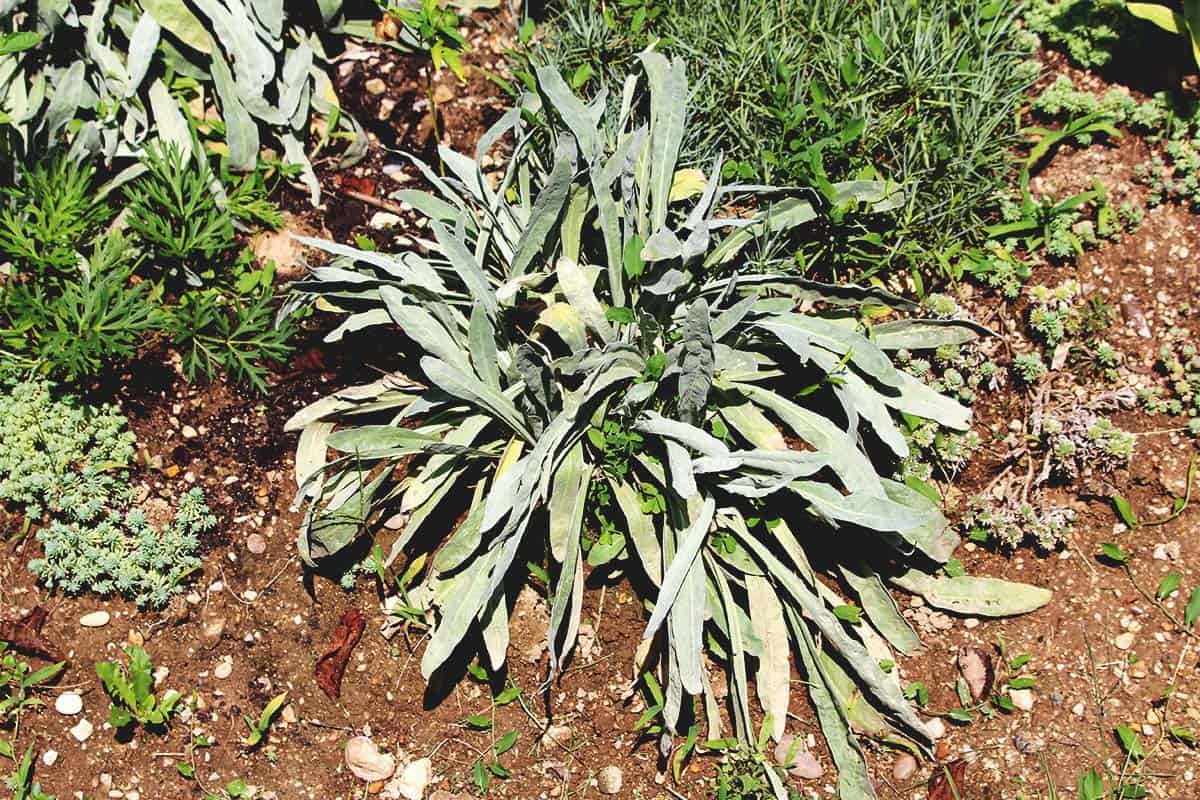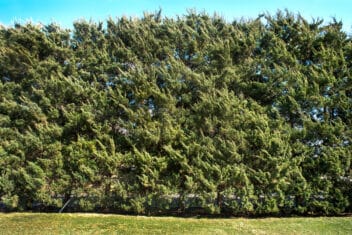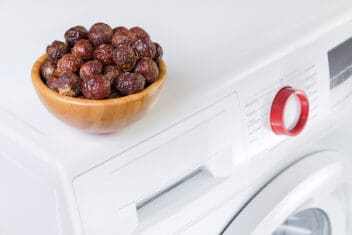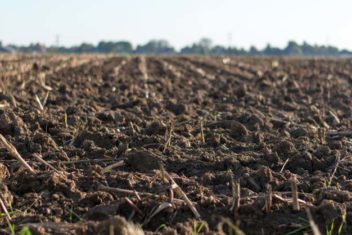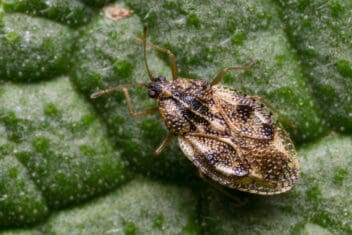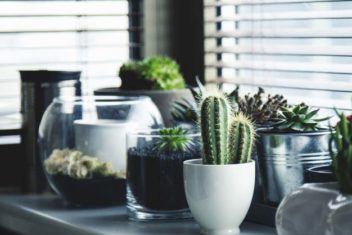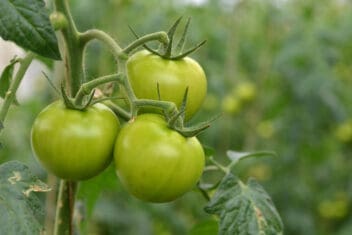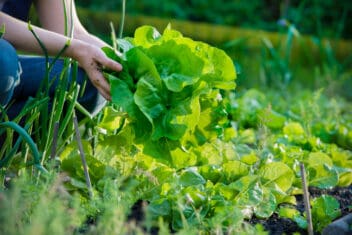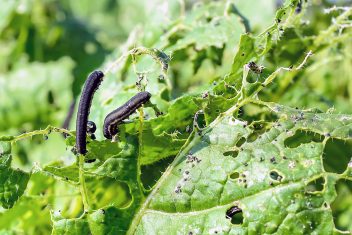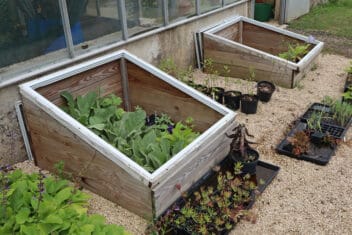I was searching for some garden information the other day and I came across a video of someone conducting a soil amendment experiment on their raised beds. They used compost in one bed, another bed biochar, and a final bed was treated with rock dust.
Their test results were given in pounds of produce. The bed with compost grew the most vegetables by weight, followed closely by the biochar bed. The rock dust bed produced the least amount of food by weight.
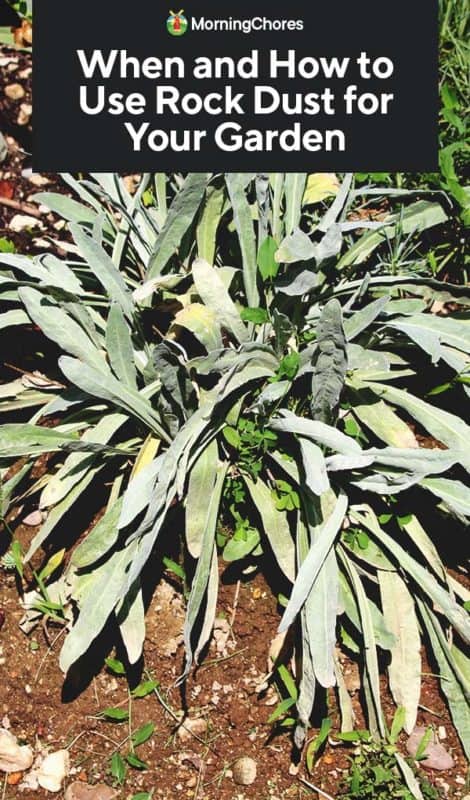
But That Was a Non-Scientific Study
The case above sounds like a pretty convincing reason not to use rock dust in your garden, right?
Well, what if I told you that, for example, the compost bed grew watermelons, the biochar bed grew strawberries, and the rock dust bed grew cut lettuce? Now it’s a whole different story.
I have personally grown 1100 pounds of watermelon in a 4 x 8-foot area with barely any effort. But, if I grew 50 pounds of baby lettuce in that same space, in the same 75 days it takes for watermelons, I’d be a rock star gardener.
Now, to be fair, I don’t think the presenter of the video set out to discredit rock dust. I think they just wanted to test soil amendments to see which work best in their garden. They might have even tried to grow a similar variety of vegetables in each bed off-camera.
They were also forthright about how non-scientific the experiment was. They didn’t even say which kind of rock dust they used. But a lot of gardeners might see the same video and start thinking that everyone suggesting you use rock dust to improve your soil is a snake-oil selling charlatan.
That’s simply not the case!
Rock dust, in all its various forms, can be useful in some gardens. But it may not be useful in raised beds.
Here’s why.
Don’t Rock Dust Raised Beds
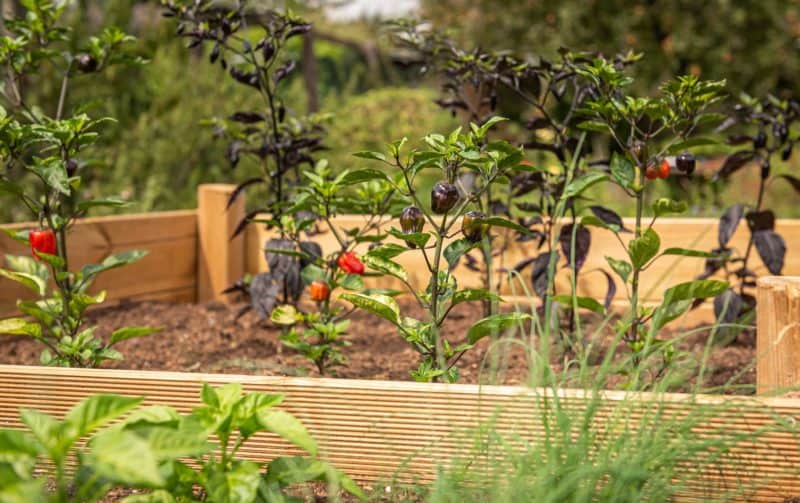
With raised beds, at best you have 6 to 8 inches of planting medium for plants to grow in. Most of the time, there’s not a whole lot of actual “soil” in that planting medium.
Raised bed or potting mixes include peat moss, compost, and sand or perlite, but not clay or silt. The reason they don’t contain either one is that those things impede drainage and encourage soil compaction. (Speaking technically, without clay, your mix is a planting medium and not fully-fledged soil.)
When you garden in incomplete soil that doesn’t contain all the various inorganic elements like rocks, silt, and clay, you need to garden in a different way than you would in soil. The chemistry of those planting mixes is completely different than natural soil. That’s why when you add rock dust to your mix, your traditional raised bed gardening method becomes less effective.
Square Foot Gardening
Now, if you are following the Square Foot Gardening method by Mel Bartholomew, then you actually replace your soil medium every single year for the rest of your gardening life. So, you never need to add anything to your mix except for what Mel Bartholomew includes in his famous soil recipe.
Your soil will never be depleted of micronutrients because you start in new soil mix every year. If you follow Mel’s instructions carefully, then you are mixing multiple kinds of compost and are sure to get the total micronutrients your plants need.
So, for the square foot gardening method don’t go off-script. Follow the formula to the letter and don’t waste your time on rock dust. Otherwise, you are not square foot gardening, you’re just plain old gardening.
Other Raised Garden Beds
Sometimes people install frames over existing soil and amend the framed area with compost or bagged potting soil mix. The frames are mainly meant to hold the amendments in place and mark the bed line to make weeding easy.
This is not the same as raised bed gardening. This is gardening in beds. I know sometimes these things all get lumped into one. But in terms of deciding how to amend your planting medium, boxed garden beds and raised beds use different approaches.
Plant roots in garden beds are growing in amended garden soil. Usually, in boxed beds, gardeners add lots of compost annually to improve the soil. Also, tilling tends to be minimal and done by hand so soil life disturbance is minimal.
In that case, the compost applied to the root zone of plants grown in that area will likely contain enough nutrients to feed plants. So, rock dust isn’t necessary. Though, if added along with compost, the rock dust is not likely to reduce your productivity the way it would in truly raised beds because the soil extends far deeper than the height of the beds and can better distribute those rock dust nutrients.
(Also, if you garden in those same exact beds for 10+ years, then you may need to see point 5 below. )
5 Scenarios Where You Want to Use Rock Dust
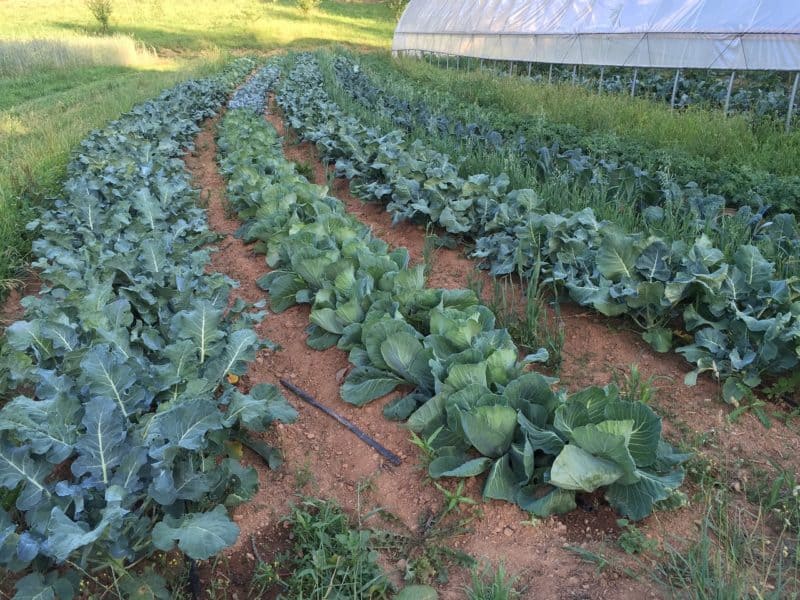
Above I’ve given you two scenarios where it really doesn’t make sense to use rock dusk. Now, let’s talk about when rock dust might be helpful.
1. Mineral Deficient Soil
A while ago I removed my lawn sod to start a garden. I added compost, but the soil below was still so mineral-depleted from years of growing high demand grass that vegetable production was slow. Adding rock dust along with compost made a big difference in my crop yields.
Based on my own experience I think that if you are gardening in a location that has been used for high intensity, year-round growing such as lawns, heavy feeding crops, or overcrowded perennials, an infusion of rock dust might be just what your garden needs.
2. Heavily Tilled Areas
Another suitable usage case for rock dust is in large gardens that are tilled regularly. Tilling makes soil lofty for a short period of time by mixing up all the soil parts. But, after a few good rain showers, heavy particles sink and light particles float. So, undecayed organic matter rises to the top of the soil profile while heavy minerals sink deeper.
By incorporating rock dust in the top few inches of soil after this settling occurs, you direct minerals right where soil biological life is located. There all that microlife can break down those inorganic minerals and make them available to plants.
This doesn’t work as well in sandy soils because of the excessive drainage. The minerals don’t stay put. But if you have a layer of clay compacted under a layer of organic matter, those minerals do tend to stay in the root zone for a while.
3. Compacted Clay
Another instance when I have found rock dust helpful is when improving compacted clay soil. Clay is loaded with minerals. However, until you can add enough organic matter and have enough soil life to begin to infiltrate those tightly-knit clay particles, those minerals are inaccessible by plants.
To improve compacted clay, I like to apply a light coating of compost and grow a cover crop like clover. Then, I’ll mow the clover, add some rock dust and organic N-P-K fertilizer, and plant another cover crop that makes more biomass like wheat. I’ll follow that with something taprooted like mustard and more rock dust and fertilizer.
After that initial dose of compost to start seeds, I don’t add compost. Instead, I let the cover crops decay and become compost. Eventually, those repetitions of cover crop roots, rock dust, and fertilizer penetrate the compacted clay and kick start the organic nutrient cycling process.
At that point, the clay provides plenty of minerals that I can leave out the rock dust. By then, I can also start growing light-feeding vegetables in that area.
4. Compost-Lite Loam Soil
Once you’ve been organic gardening for years and years, you’ll develop lovely loamy soil full of stable humates. Then, you won’t need to add so much compost each year to grow healthy plants.
All the humic content in your garden will reduce plant dependence on high levels of N-P-K by improving plant nutrient uptake. At the point where you reduce your compost input, it can be beneficial to recharge your trace soil mineral content with rock dust.
But, as the product sellers will tell you, you use rock dust only for a couple of years. Then you stop until a few years later when you need it again.
5. Backyard Vineyard
A final scenario where I find rock dust useful is in my backyard vineyard. Wine grapes love lots of minerals. Since so many of us are starting to grow wine grapes at home, even in less than ideal scenarios, rock dust can be a useful way to make soils more amenable for finicky varietals.
Different Kinds of Rock Dust
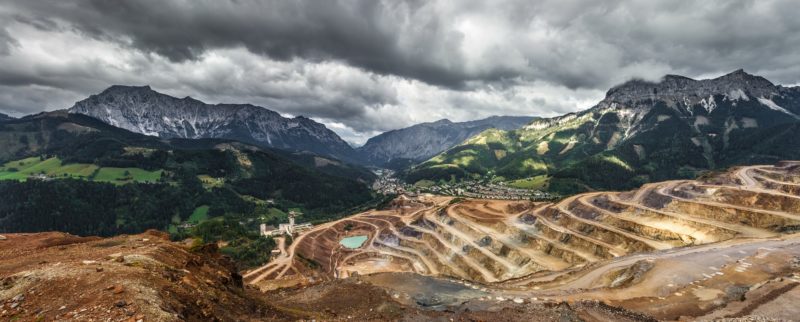
If rock dust makes sense for you, it’s important to note that there are different kinds of rock dust that impart different mineral compositions into the soil.
Also, note, these are often mined minerals and have varying environmental impacts. So, you may want to do additional research on how they are mined before use.
1. Azomite®
Azomite is a registered trademark name for a particular kind of volcanic rock. It is said to have 70+ different trace minerals. It’s easy to find at garden centers. If you are concerned about aluminum, lead, and arsenic in soil amendments, then you’ll want to do more research on this product before buying.
2. Basalt
Basalt is a ground form of volcanic rock. Many people consider this the best rock dust for vegetable gardens.
3. Glacial Rock
This is made from sediment created by glacial expansion and contraction. It may not contain as many trace elements as Basalt or Azomite.
4. Granite
Granite is my go-to dust since we live 15 miles from a quarry. It’s cheap and the varied particle size means it encourages drainage in our clay soils. Granite is less available at garden centers and its micronutrient content not as studied. But it works great in my garden.
5. Gypsum
Gypsum is a good source of calcium and improves the cation exchange in clay soils. It has fewer minerals than other dust, but by improving the cation exchange it makes minerals more available to plants.
6. Salts
Some people also use mineral salts to add trace minerals. I have not had good results with this because I grow a lot of plants that are salt-sensitive. However, coastal plants with high salt tolerance love this stuff.
Follow Manufacturing Instructions
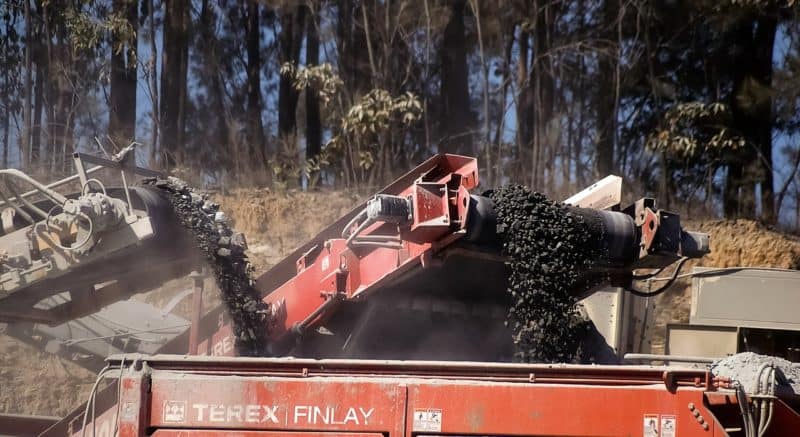
Reputable companies who sell and market rock dust would have done their own field tests to determine application rates in different soil types. They should be able to guide you correctly on how much to use to get the best results.
So, don’t just guess! Follow the instructions provided by the manufacturer.
If you buy bulk amendments, such as granite dust, then check agricultural university or extension office websites for application guideline assistance.
Garden Experimentation
What I loved about that video I mentioned on rock dust in raised beds is the idea of experimentation. The truth is scientists know very little about the complexities of living soils like what we nurture on our homesteads. The bulk of scientific soil research has been geared toward industrial agriculture.
This is changing. Every day new studies are coming out that reveal just how incredible living soil is. Yet, the research is still not targeted toward applications in our backyard gardens. So, to a large extent, we are on our own to figure out how best to grow our gardens.
Using formulaic systems like straw bale or square foot gardens make growing food easy. Yet, when you scale up to large homestead gardens, these systems are too expensive for many of us. That’s where experimentation with rock dust and other things (like various forms of compost or biochar) becomes really useful.
Let’s Rock and Roll
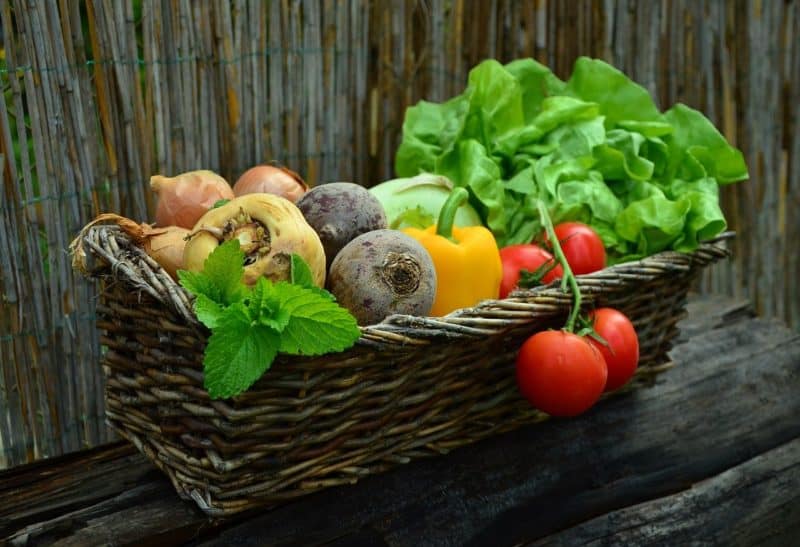
I can say from my own experiments that rock dust can be useful in my garden. But it’s not the only amendment you need. It’s also not useful in every situation.
Rock the rock dust when appropriate. Roll it aside for scenarios like raised beds or boxed garden beds when it just doesn’t make sense. Oh, and always take good notes so you remember what works and doesn’t!
